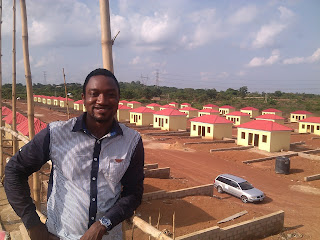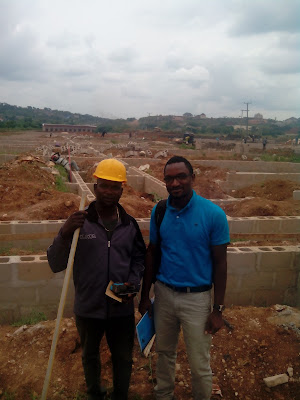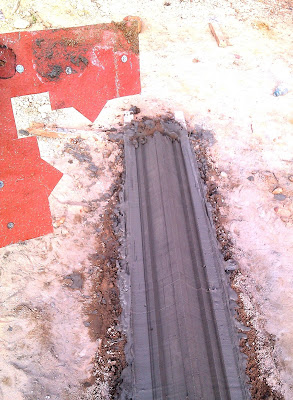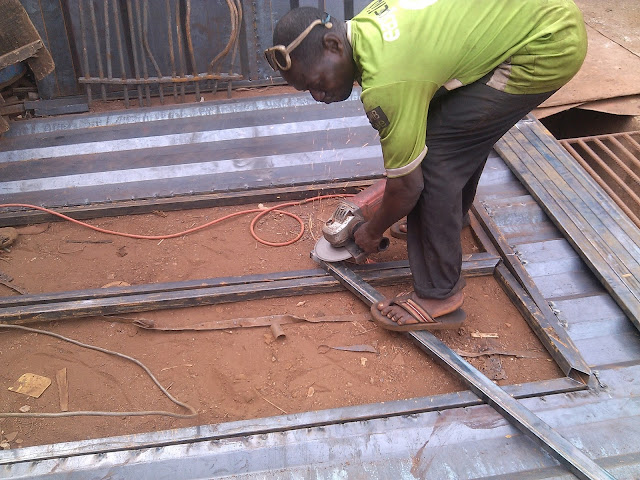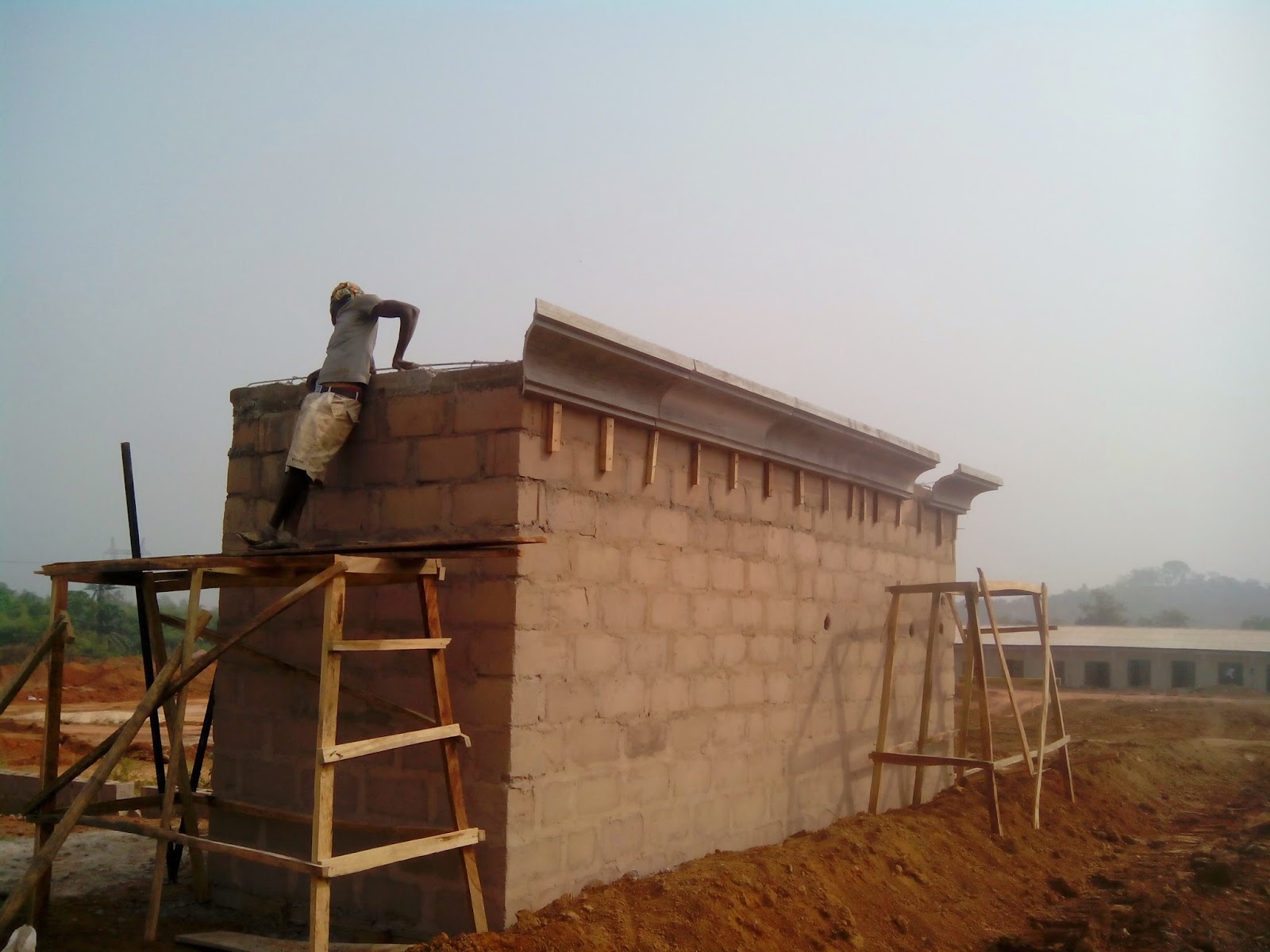By Kosi Emmanuel Chukwujindu
Project Architect
Project Architect
ENSIBUM is short for the : Enugu-South international Building materials market. The first phase of its development is 95% complete. This zone is for sale of reinforcement bars.
It features a small 3m x 2m office space with large 6m x 12m frontage/ per occupant for stacking the reinforcement bars for sale. A total of 200 single units have been completed so far, and is on sale to the general public at a flat rate of N2,500,000.
As we know the developer is Mc.Donalds manufacturing and industries ltd. The technical consultancy service from scratch was rendered by GEOMETRIX consultants and Builders ltd. while the construction was done by MALDINI construction company ltd. our sister company. I have been the project manager here for over a year now.
This post highlights my personal reflections about the project as it gradually nears hand over. As a great man said: "in life, we never really lose, its either we win or we learn something". I can say I have picked up a thing or two while working on this project.
1. Never forget who you are directly answerable to. While assuming the perfect courtiers posture to everyother interests.
2.
Never conive secretly or openly with your staff to loot the company. It will be blown out of proportion when they speak of it and you will be made to look like a thief..just like them. As much as you can, keep the books tidy.
3. Dont assume you know everything just because you have a college degree. Listen to others ideas but remain the decision maker.
4. No matter how lonely she is at home, never bring your spouse to the site. Let work be work and family be family.
5. Monthly paid or at least weekly paid staff, perform netter overall than daily paid staff. They also offer greatter degree of dependability.
6. Dont live inside your own box, ask around elsewhere for broader ideas, methods and rates before you decide on your own project.
7. Dress for the job. Wear suitable clothes for the work always..make sure there is clear distinction between the worker and you.
8. Never employ anyone who is too old or way above your physical and psychological control. Make sure your staff remains loyal to you and you alone. Do not invite them to sit with the m.d when you are having a meeting, else they get a false sense of belonging and grow rebelious. Discharge such rebellious ones at once else they plan a mutiny against you.
9. Diplomacy is the key to manipulation. Use it always to get your way, without force, plead when you have to, enforce when you need to, coerce people to do your work happily.
10. If the project does not provide a vehicle, buy one for yourself!
11. Be reacheable and ready always.
12. Dont forget to learn!
This post highlights my personal reflections about the project as it gradually nears hand over. As a great man said: "in life, we never really lose, its either we win or we learn something". I can say I have picked up a thing or two while working on this project.
1. Never forget who you are directly answerable to. While assuming the perfect courtiers posture to everyother interests.
2.
Never conive secretly or openly with your staff to loot the company. It will be blown out of proportion when they speak of it and you will be made to look like a thief..just like them. As much as you can, keep the books tidy.
3. Dont assume you know everything just because you have a college degree. Listen to others ideas but remain the decision maker.
4. No matter how lonely she is at home, never bring your spouse to the site. Let work be work and family be family.
5. Monthly paid or at least weekly paid staff, perform netter overall than daily paid staff. They also offer greatter degree of dependability.
6. Dont live inside your own box, ask around elsewhere for broader ideas, methods and rates before you decide on your own project.
7. Dress for the job. Wear suitable clothes for the work always..make sure there is clear distinction between the worker and you.
8. Never employ anyone who is too old or way above your physical and psychological control. Make sure your staff remains loyal to you and you alone. Do not invite them to sit with the m.d when you are having a meeting, else they get a false sense of belonging and grow rebelious. Discharge such rebellious ones at once else they plan a mutiny against you.
9. Diplomacy is the key to manipulation. Use it always to get your way, without force, plead when you have to, enforce when you need to, coerce people to do your work happily.
10. If the project does not provide a vehicle, buy one for yourself!
11. Be reacheable and ready always.
12. Dont forget to learn!
